
Accent
Students create a phrase and alter it by changing accents.
Select from the following Dance Skills activities that develop students’ skills relating to body, movement, technique, choreography, performance and communication through dance.

Students create a phrase and alter it by changing accents.

Students discuss safe dance practice and generate a dance injury report.

Students observe, experience and notate basic salsa moves.

Students recreate the staged fight between Abigail and Sammy with particular attention to body language.
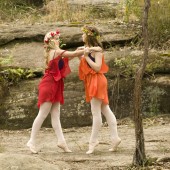
Students choreograph a fight scene.

In pairs, students create a phrase of music without the use of speech.

Students create a cygnet dance in the style of line dancing. Rate selves using activity sheet.

Students learn about dance for people of all abilities, watch some clips of companies that specialise in this field and discuss movements seen.

Students develop a dance duet without music by utilising sounds in their immediate environment.

Students prepare a one-minute routine with props.

Students learn about dynamics and apply these to a learnt phrase.

Students engage in two structured improvisations and create a short phrase based on effort actions.

Students recount family stories by creating tableaus.

Students consider family traditions and create a movement phrase based on action words.

Guided improvisation on small shifts of the body that constitute “falling”.

Students discuss the giving and receiving of notes for improvement of group and individual performances, learn a dance and practice giving each other notes.

Students perform activities from the Ausdance Fitness Test then devise their own speed test.

Students create a floor phrase where they do not use their hands or stand on their feet.

Students play two games that explore differences in effort levels when applying force and flow in dance.
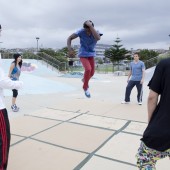
Students participate in a number of small activities leading to hip hop free form (improvisation).
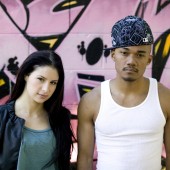
Students find examples of graffiti and create a phrase based on graffiti images.

Students create their own Haka.

Students create a feel good dance. Reflect on their feelings before and after.

Students create a hip hop fashion show.

Students attempt to expand their solo ideas through improvisation techniques.

Students watch examples of site specific work and generate movement response to alternative locations.

Students create a jumping phrase and consider musical implications for different jump speeds.

Students learn about safe dance practice in relation to jumps.

Students explore a range of jumps and observe some jump styles from the internet.

As a whole the class learns a sequence from Kat’s routine. They then create variations of this dance sequence.

Students consider the communication skills necessary to teach specific skills.

Students develop a lighting plan and then attempt to realise it via low tech lighting found in and around the school.

Students learn a range of contemporary dance movements and phrases.

Students learn some movements from the clip, arrange these in an order that they prefer and perform the dance to a range of musical scores.

Students select a character from the Nutcracker and design a costume with consideration to the particular movement performed by the dancer in the role.

Students collaborate in pairs as choreographer and dancer to develop a dance solo.

Students research an Australian modern dance pioneer and construct a timeline of key works.

Students demonstrate existing skill in small groups and collectively construct a group phrase.

Students describe footwear for dance, history of the point shoe and experience a range of feet and calf strengthening exercises, keeping a record.

Exploring what friendly rivalry means, students perform and dance battle in a hip hop style.

Students look at roles on set and create a “postcard” of a set and bring it to life for 15 seconds.

Students learn how, when and why to stretch and create a poster demonstrating understanding of the theory.
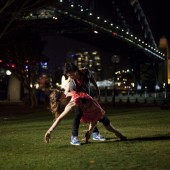
Students improvise with the basic salsa steps.

Students learn one salsa dance and then swap leading roles.

Students learn about the influence of the Ballet Russes, hear the story of Scheherazade and design a costume for one of the characters.

Body shape is explored through improvisation of shapes – call and response method with reflective activity.

Students choreograph pathways in space using their initials as impetus.

Students learn about symmetry and asymmetry in pairs and as a group. They apply spatial arrangements of groups to an existing dance.
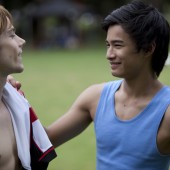
Students select movement from three different sports and create a dance.

Students create a dance, photograph or draw it and arrange as a storyboard. Extension activity rearranging the elements.

Students create a dance about bullying, perform and direct each other.

Students warm up and learn a dance from the Dance Academy website tutorials.

Students learn about the history of hip hop and based on freezes and poses create a simple hip hop phrase.

Students watch the ballet and write a synopsis of the story.

Students learn to hear and perform to the beat.

Practical activity where pairs of students perform activities as one person, taking into account the other’s point of view.

Students experience a range of trust activities and rate their levels of trust.

Students learn some of the basic skills needed for successful turns.

Students review a variety of turns and construct a visual collage of turns.
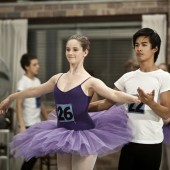
Students try a few rock’n’roll moves and create a photo wall of fame.

Students experience a range of activities and create a dance to be performed in unison. Feedback by peer review.